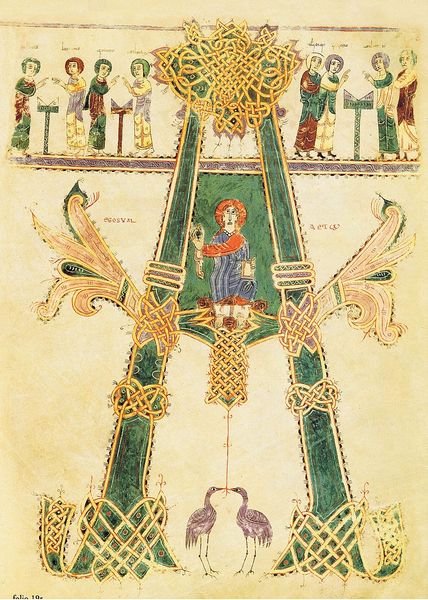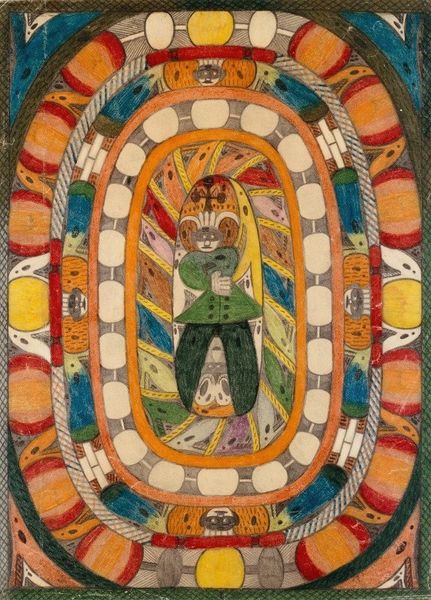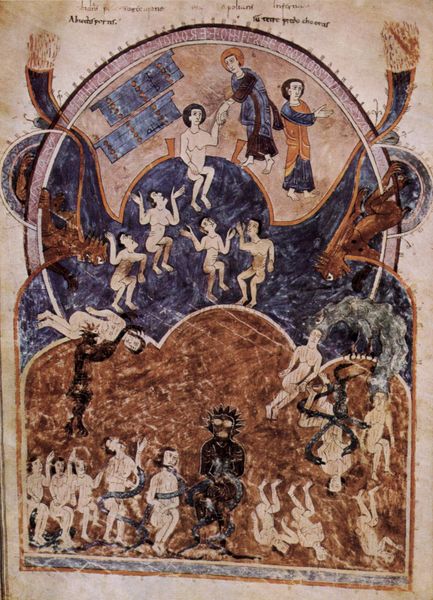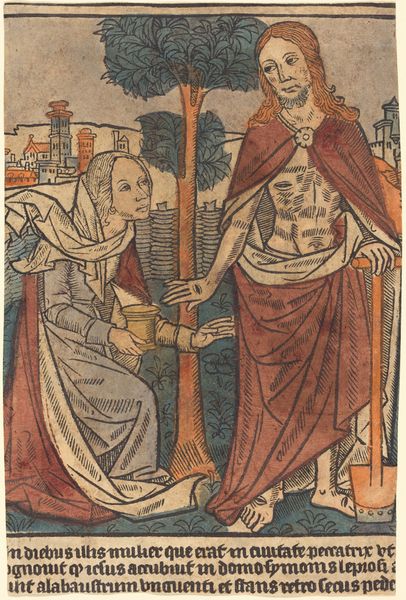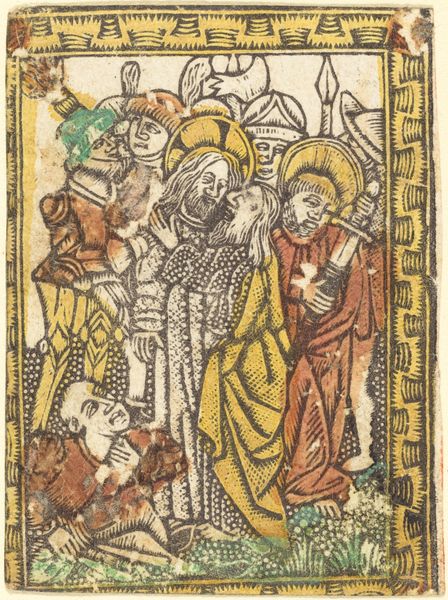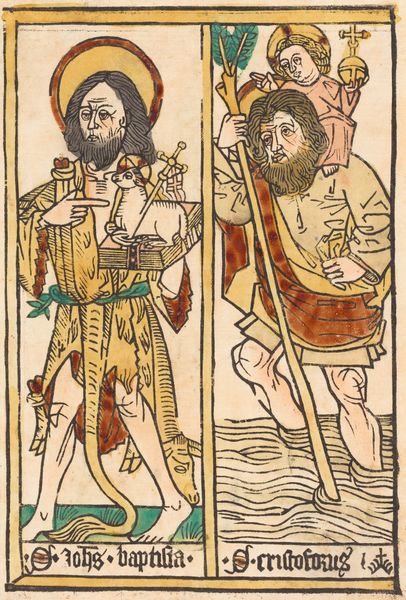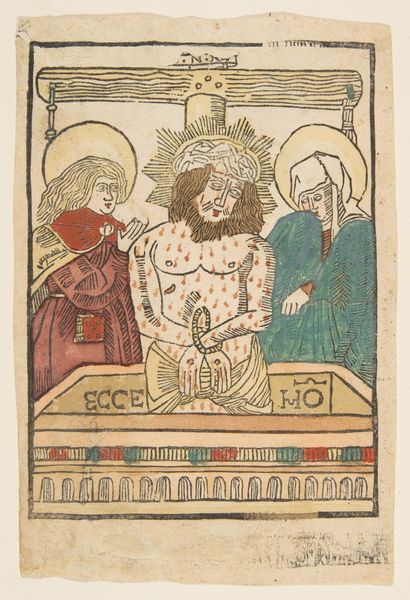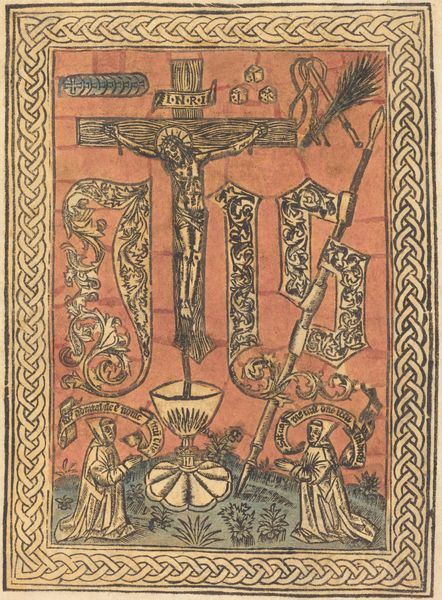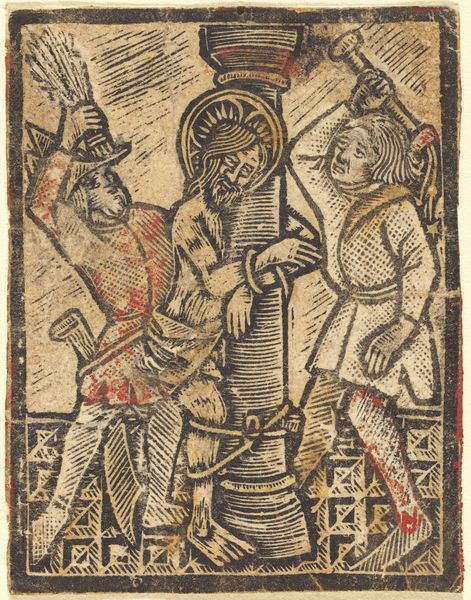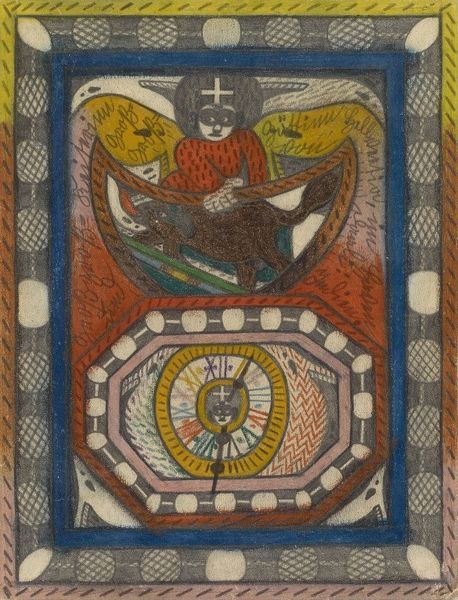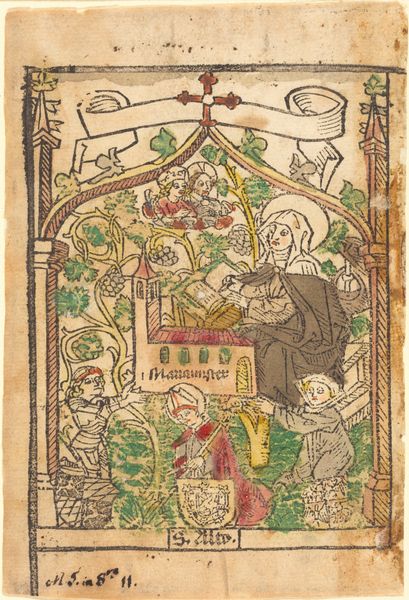
#
toned paper
#
stain glass
#
handmade artwork painting
#
fluid art
#
naive art
#
art nouveau
#
watercolour illustration
#
cartoon carciture
#
organism
#
cartoon theme
#
watercolor
Copyright: Public domain
Hildegard of Bingen, a Benedictine abbess, created "Vision of the Last Days" using parchment, tempera, and ink, materials typical for manuscript illumination. The vivid colors were achieved through the careful grinding of pigments, likely minerals or plants, mixed with egg yolk to bind them to the parchment. The application would have required immense patience. Layer upon layer, the artist built up these jewel-like colors, achieving a luminous effect characteristic of medieval art. The materials and techniques were not merely aesthetic choices but were deeply connected to the monastic culture in which Hildegard lived. The slow, deliberate process mirrored the contemplative life of the abbey, each stroke a form of devotion. Moreover, the use of precious materials like gold leaf suggests the value placed on the spiritual content of the image. Ultimately, "Vision of the Last Days" is a testament to the skilled labor, spiritual devotion, and cultural context that shaped its creation. The manuscript represents the fusion of art, craft, and religious practice, challenging traditional distinctions between these domains.
Comments
No comments
Be the first to comment and join the conversation on the ultimate creative platform.
